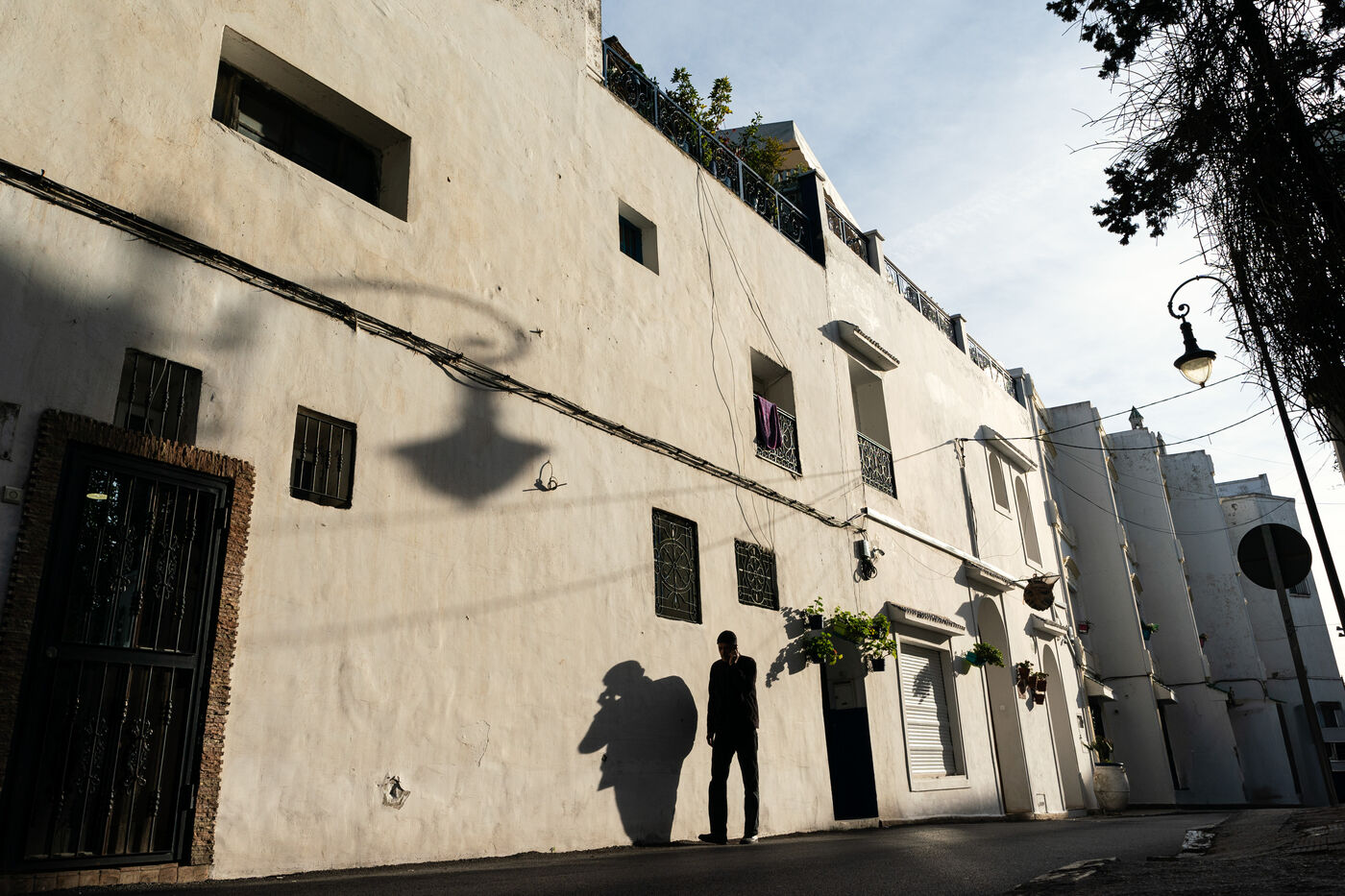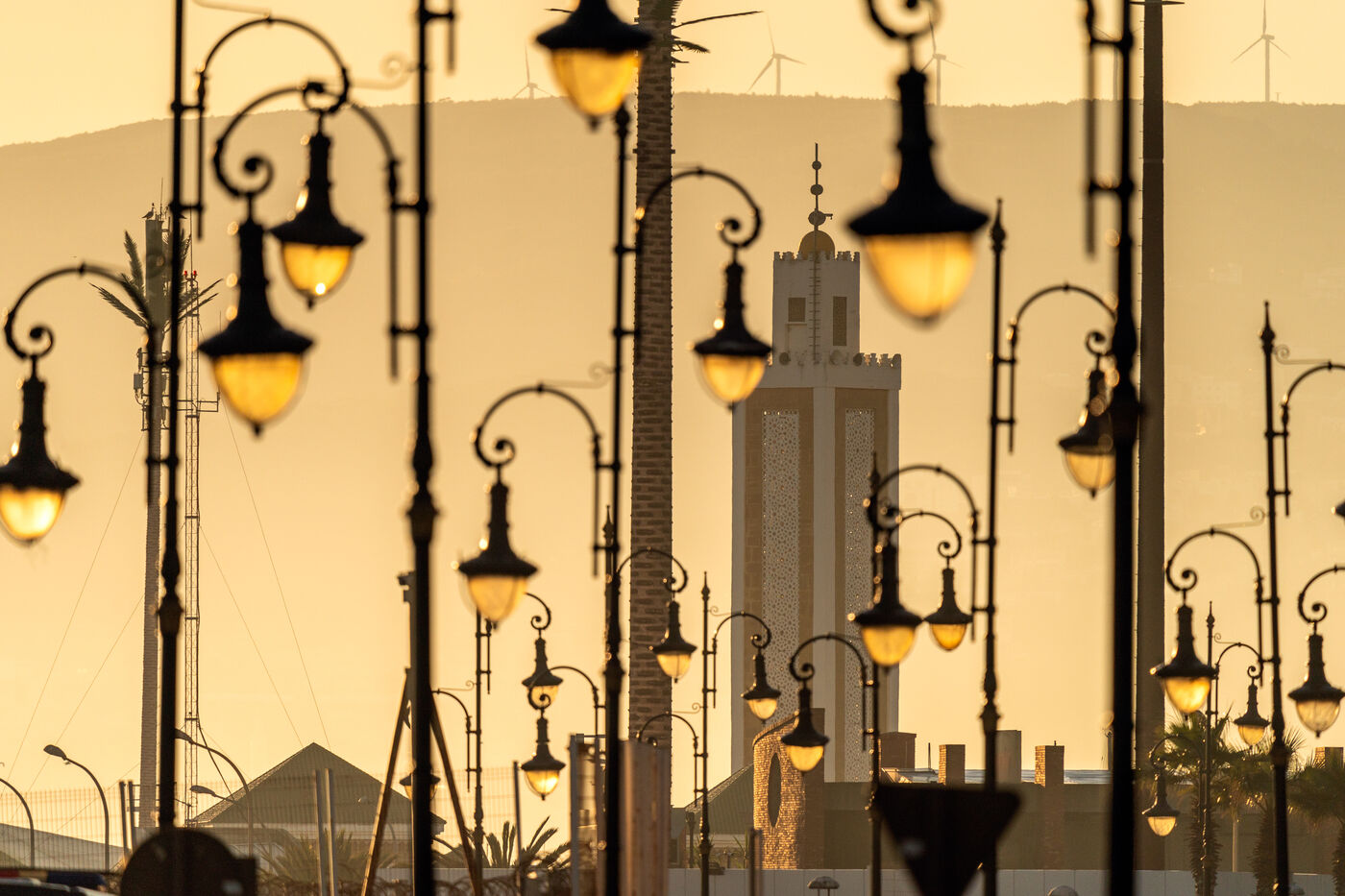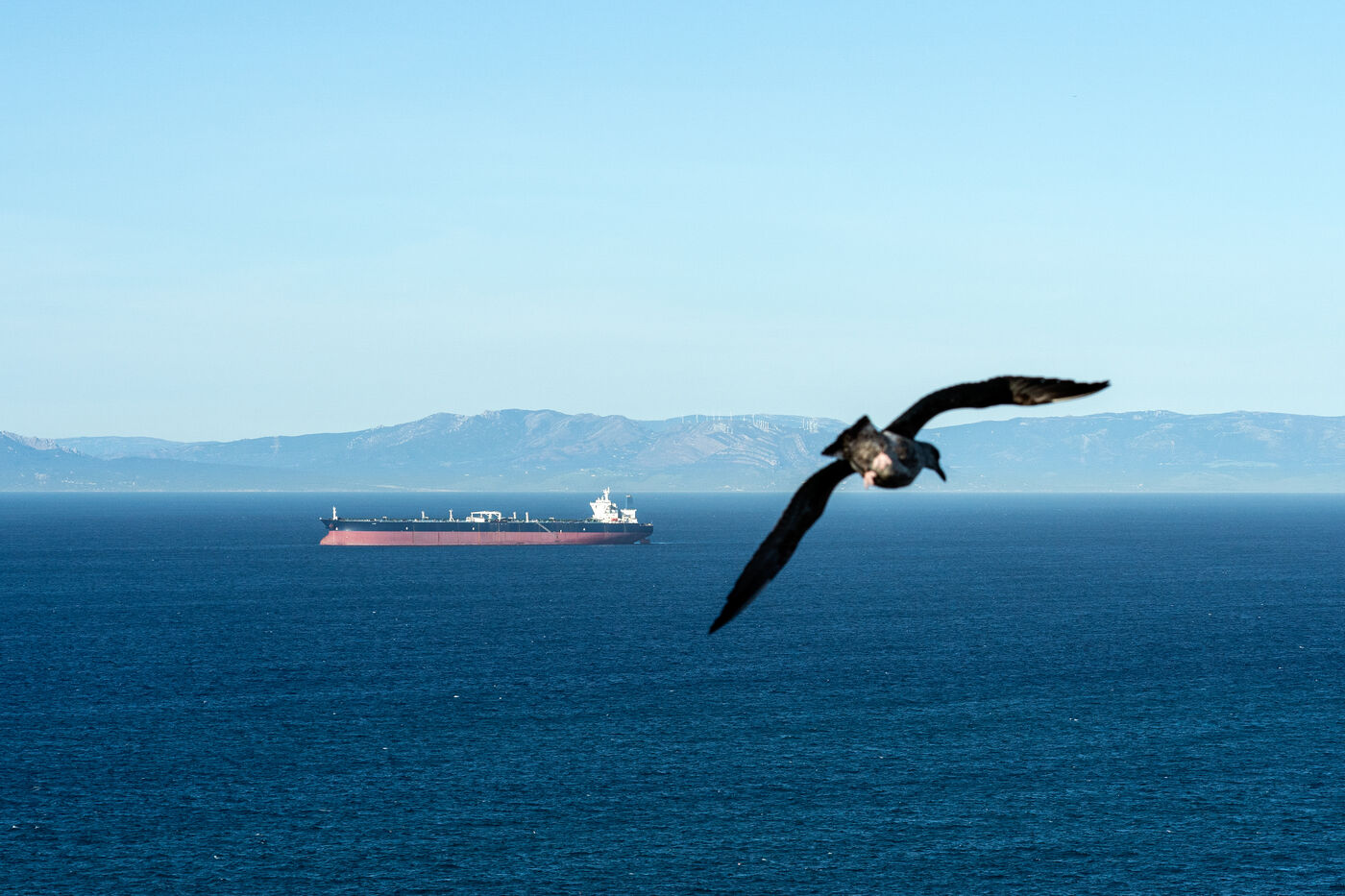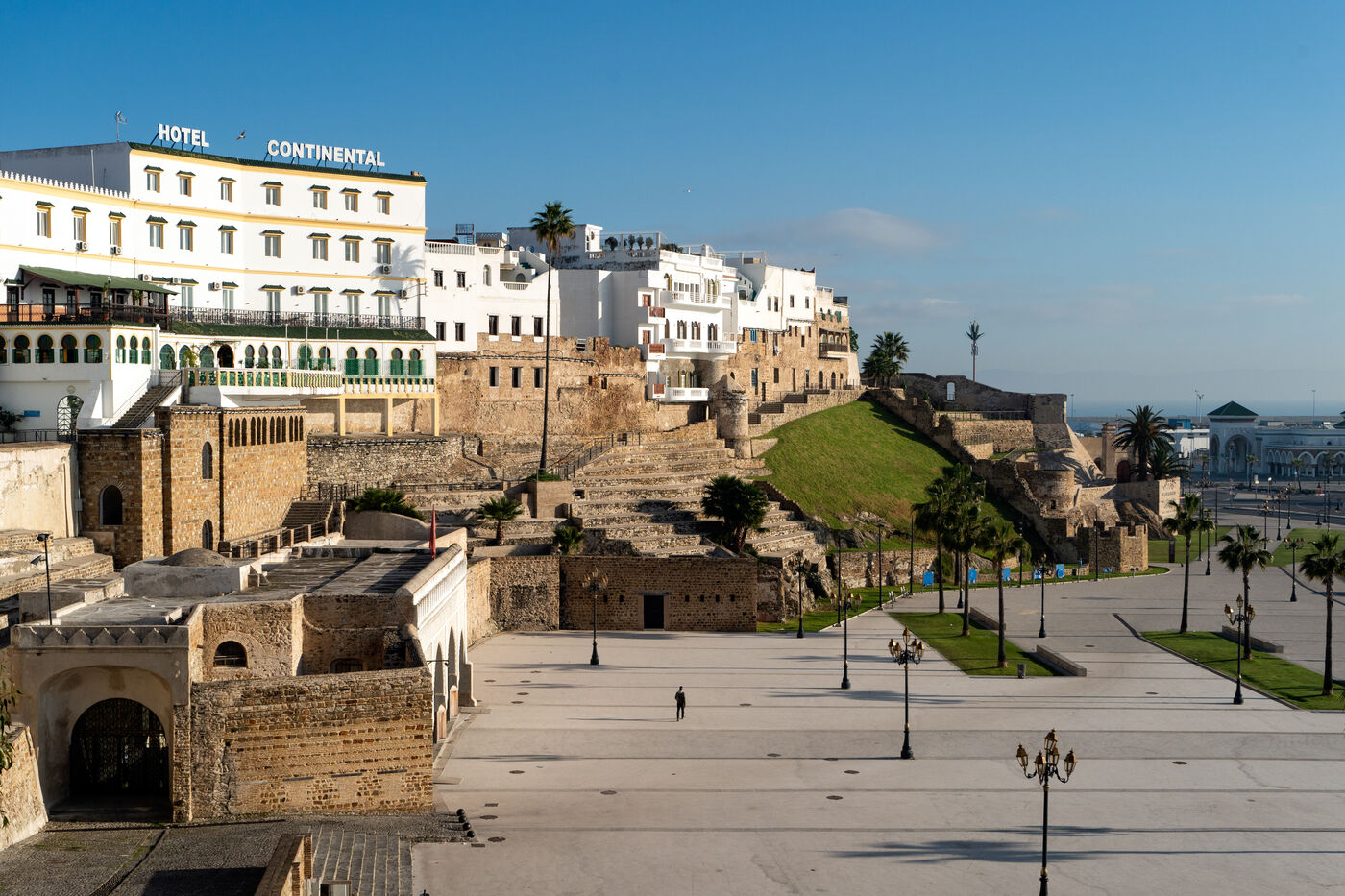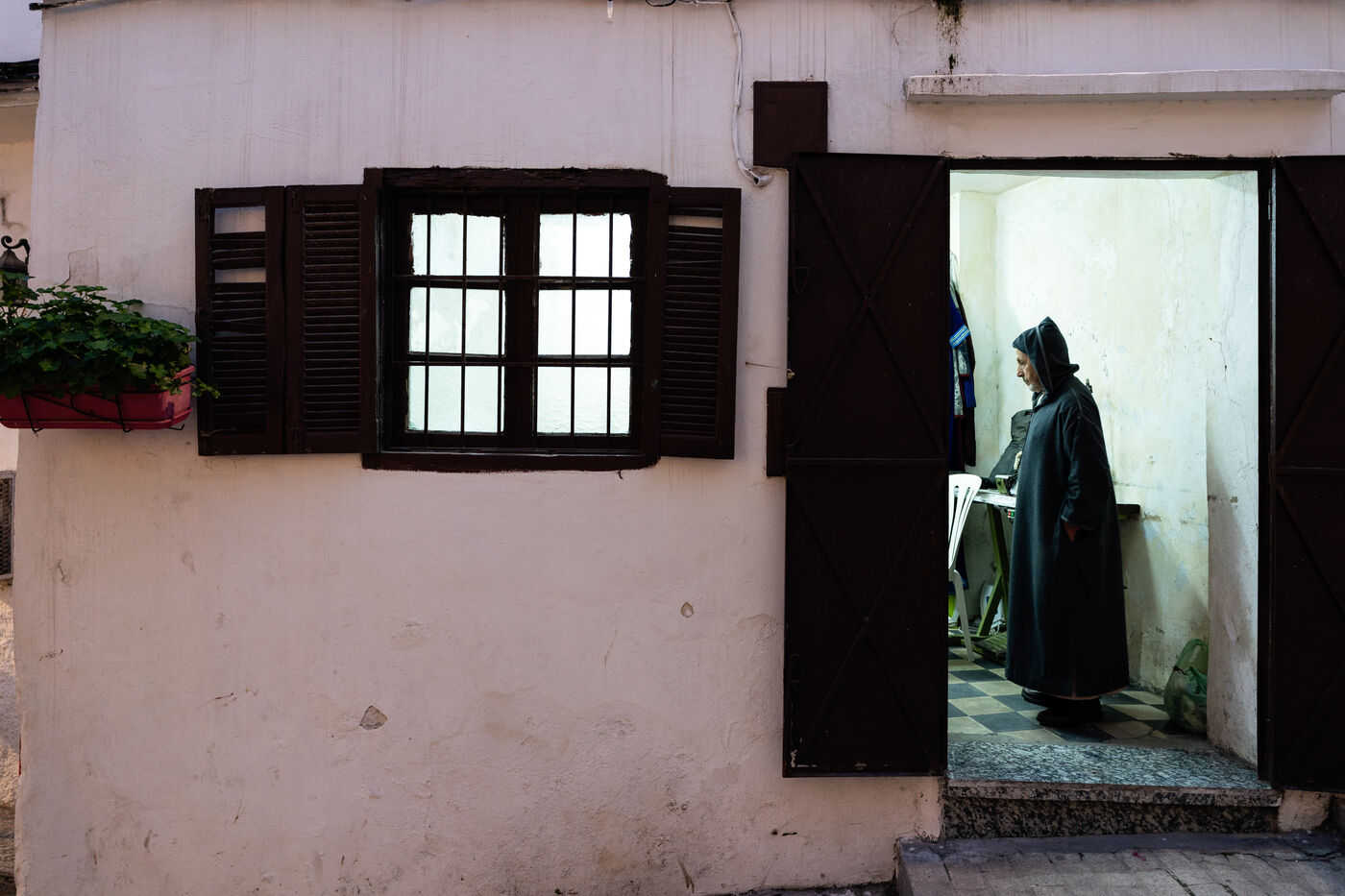Pour accéder à la série en entier, vous devez vous logger ou demander un compte Hans Lucas en cliquant ici.
Tanger, carrefour des âmes et des civilisations
D'abord établie sur la colline de la kasbah, la ville de Tanger s'est progressivement étendue vers l'ouest en direction du cap Spartel puis plus récemment, le long de la plage, en direction du cap Malabata à l'est. Tanger a connu une importante diversité d'empires et de puissances coloniales. De la Grèce antique à Rome en passant par les Portugais ou la couronne d'Angleterre, les influences lui ont donné cette réputation de ville à l'histoire tumultueuse. Chrétiens, Juifs, Musulmans s'y sont parfois défiés mais pour la majeure partie du temps ont cohabité pacifiquement, faisant de la ville un modèle cosmopolite d'entente interculturelle.
Au XXème siècle, la ville a obtenue un statut de "zone internationale de Tanger" qui dut sous administration conjointe de la France, de l'Espagne, du Royaume-Uni, du Portugal, de l'Italie, de la Belgique, des Pays-Bas, de la Suède et des États-Unis. Cette situation particulière conféra à la ville un attrait qui captiva romanciers, artistes, mondains, aventuriers ou encore espions. Ainsi se forgea l'image d'une ville atypique, créative, rebelle quelques fois dangereuse selon certains.
Tangier, place of passages and encounters
First established on the hill of the kasbah, the city of Tangier has gradually extended westward towards the cape Spartel and more recently, along the beach, towards the cape Malabata to the east. Tangier has seen a great diversity of empires and colonial powers. From ancient Greece to Rome through the Portuguese or the Crown of England, influences have given it a reputation as a city with a tumultuous history. Christians, Jews and Muslims sometimes challenged each other but for most of the time they cohabited peacefully, making the city a cosmopolitan model of intercultural understanding.
In the 20th century, the city was granted the status of "International Zone of Tangier", which was jointly administered by France, Spain, the United Kingdom, Portugal, Italy, Belgium, the Netherlands, Sweden and the United States. This particular situation gave the city an attraction that captivated novelists, artists, mondains, adventurers or spies. Thus was forged the image of an atypical city, creative, rebellious sometimes dangerous according to some.
